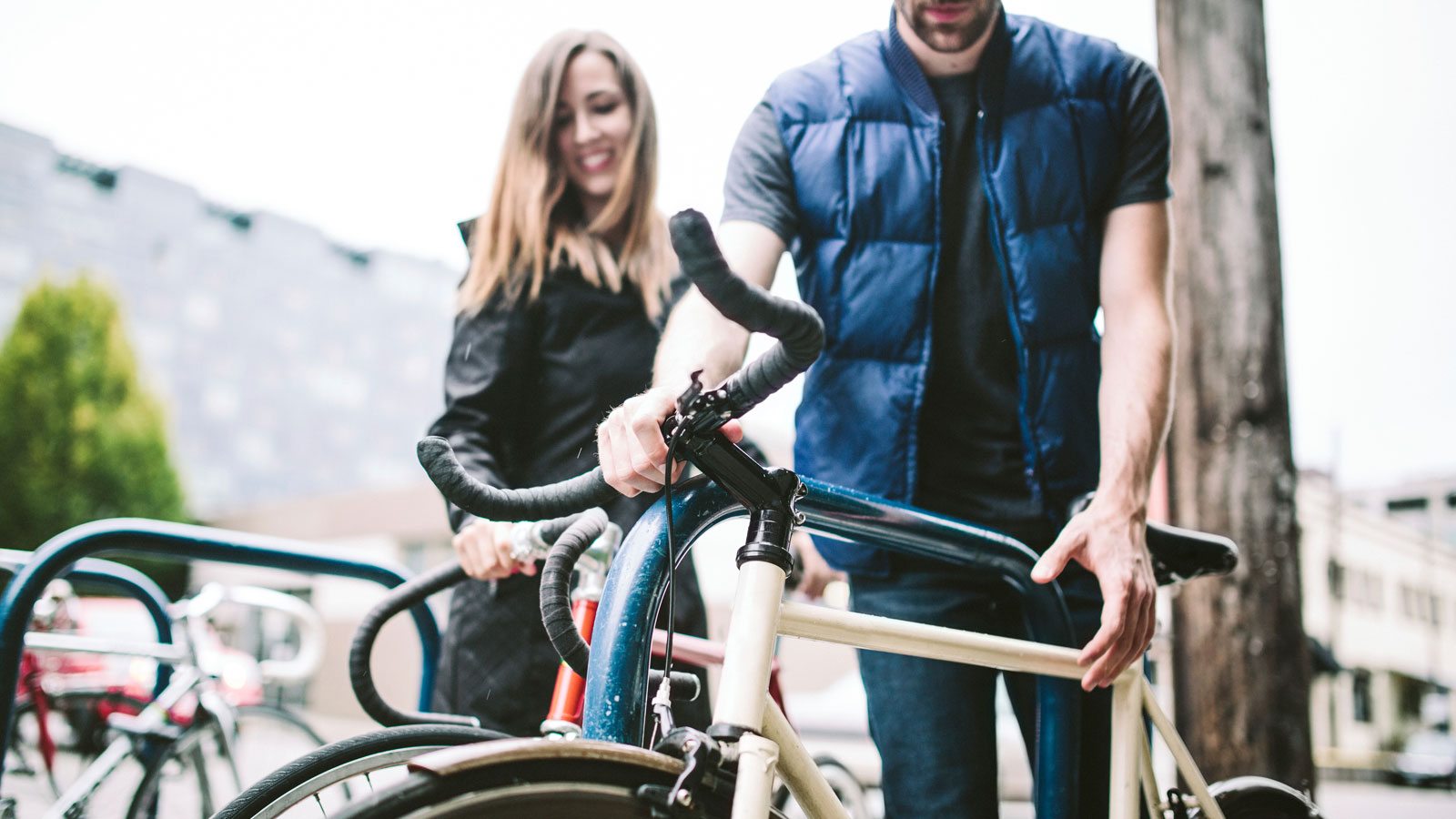It may not be an ideal all-weather mode of transportation, but cycling is an increasingly viable way to get around Alberta. Urban centres like Edmonton and Calgary continue working to build infrastructure and promote cycling safety, while Rocky Mountains municipalities such as Jasper and Banff have long embraced two-wheeled culture.
However, more bicycles on Alberta roads (and cycling paths) means more opportunity for bicycle theft. Whether your ride is a rugged mountain bike, a sleek new Tour de France-ready steed or just an old commuter bike for getting around town, you’ll want to take steps to protect it—and to mitigate your losses in the unfortunate event that it’s stolen.
DOCUMENT YOUR OWNERSHIP
Before you even set out for a pedal, create a record to prove that you own your bike. Obviously this won’t physically prevent it from being stolen, but the paper trail may help you recover your ride if it is taken. For starters, write down your bicycle’s serial number. Then take a photo of yourself with the bike. You may also want to register your bicycle with a free online database such as bikeindex.org, which stores your bicycle’s details and then publicizes them if you report a theft.
MAKE SURE IT’S INSURED
If you have home insurance, your bicycle is covered under your contents insurance—though there can be limits on your coverage depending on the type of loss and the specifics of your insurance policy. Of course, your policy’s deductible still applies, so if your bike is stolen, you’ll need to consider whether its replacement value is greater than the deductible (and therefore worth claiming).
MORE TO READ
Do-it-yourself bicycle tune-up tips
A floater can be added to your policy to cover the replacement cost of a top-of-the-line bike. This will bump up your overall insurance premium a bit, and there’s still a deductible, but in exchange you can get a smaller deductible specifically for your bicycle. Note, however, if you use that premium bike for racing or competition, those situations are likely excluded under your home policy. You’ll want to check with your insurance provider to make sure you have the right coverage for your lifestyle.
BUY THE BEST LOCK
Protecting against loss is always a good idea. Preventing that loss from occurring is even better. That’s why investing in a strong bike lock is some important. Most experts recommend securing your ride with a hardened steel chain and padlock, the best of which hold up well against powered angle grinders—currently the nuclear option for experienced bike thieves. Alternatively you can use a high quality, reinforced steel U-lock. On the other hand, don’t rely on a cable lock as your sole source of security. Motivated thieves can snip even the sturdiest-looking cable lock within seconds.
MORE TO READ
Taking steps toward safer roads in Alberta
BE A SMART PARKER
No bike or lock is 100 percent theft-proof. The goal is to make your bicycle an unappealing target: Park it in a well-lit, well-trafficked area, and fasten it to a solid, immovable fixture. A recommended way to do this? Thread a U-lock through the back wheel, inside your bike frame’s rear triangle, and use a secondary lock to secure the front wheel. And remember, don’t walk away without taking any easily removable items with you, like lights, bags and quick-release seats.
LOOK TO THE FUTURE
As with most other areas of our lives, smart technology has infiltrated our bikes too. So far, much of the innovation has been focused on the fitness aspect of cycling—with ride-tracking apps and so on—but there have been a few developments when it comes to security. Some companies are creating keyless locks that are controlled by your phone, and which can signal you if they’re being tampered with. Others have developed GPS-based components that help track your bike if it does get stolen. While these nascent devices aren’t necessarily better than traditional security options (and make no mistake, legacy lock-makers are also developing ever-stronger products), they’re certainly worth keeping an eye on.
